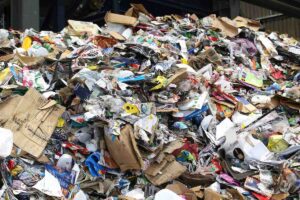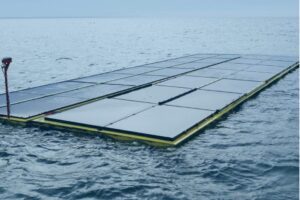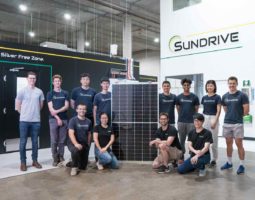A new type of tandem solar cell that combines the properties of perovskite and silicon technologies has surpassed the solar-stretch goal of 30 per cent power conversion efficiency, a research team from ANU claims.
The Australia National University team says the new solar cells, made by stacking the two different varieties of solar technology together, have achieved an “ultra-high” efficiency of 30.3 per cent.
This compares to solar cells made only of silicon, by far the predominant global solar technology, whose power conversion is nudging towards 27 per cent in the lab, but remains closer to 20 per cent in commercial applications.
Globally, the push to convert a greater percentage of sunlight into energy – both per solar cell and per solar module – is a major focus of R&D funding from governments and industry, in the name of making the cost of solar power even cheaper and more accessible.
In Australia, the Renewable Energy Agency, ARENA, has set a ‘Solar 30 30 30’ target to improve solar cell efficiency to 30 per cent and reduce the total cost of construction of utility scale solar farms to 30 cents per watt by 2030.
To this end, ARENA announced a $40 million competitive funding round in January of 2022, to drive innovation in solar PV cells and modules or reduce balance of system, operations and maintenance costs.
The ANU tandem cell research, led by Dr The Duong, has been financially supported by ARENA through the Australian Centre for Advanced Photovoltaics.
“Surpassing the 30 per cent mark is significant,” said Duong this week. “That’s currently considered the efficiency threshold for the commercialisation of tandem technology like that used in our study.”
Duong says the result was achieved by tapping the particular strengths of each of the two types of solar cell technology.
“With these tandem solar cells, the perovskite top cell can efficiently absorb the blue light and transmit the red light to the silicon bottom cell, producing significantly more energy from sunlight than each individual device,” he said.
Duong says ultra-high efficiency is not the only perk to result from the team’s mechanical stacking approach; it has also enhanced the operational stability of the solar cells – an ongoing challenge to the commercialisation pathway.
“The current predictions are that tandem solar technology will be in mass production by 2026,” Duong says.
“However, more work is still needed to upscale and ensure the technology can be stable in the field over 25 – 30 years.”
The team is now working to further improve the efficiency and stability of the solar cells. The findings of the study are published in Advanced Energy Materials.










